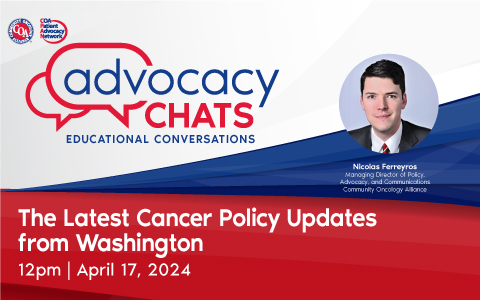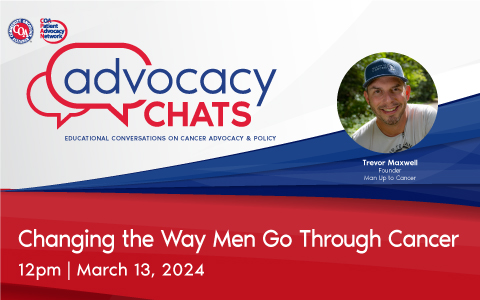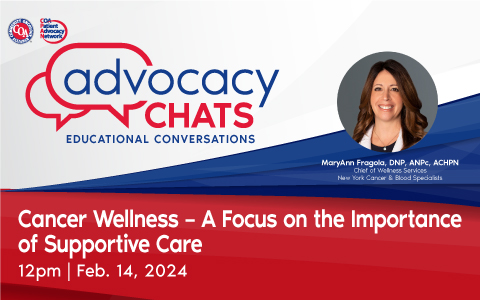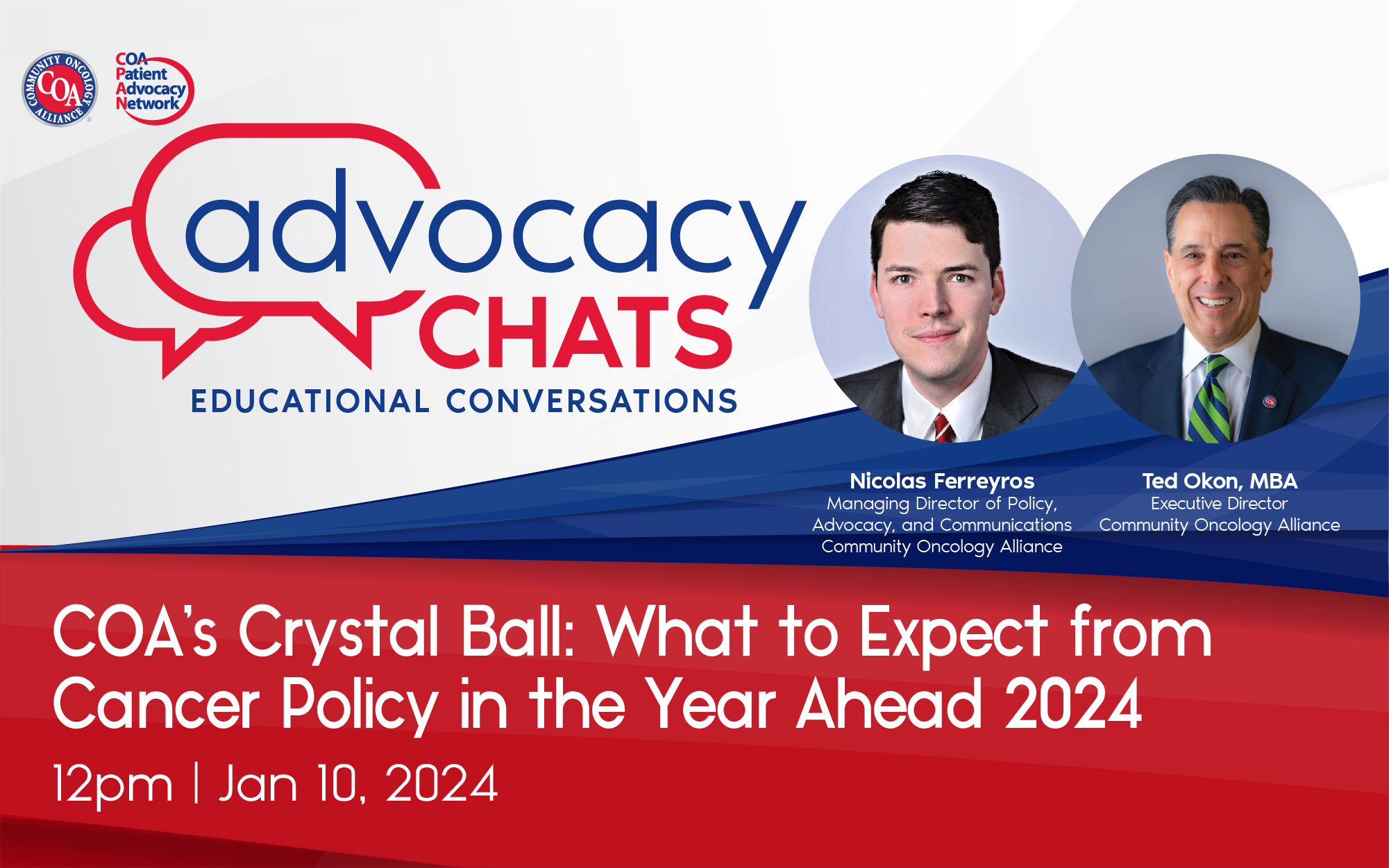The Financial Crisis of Cancer
For patients with cancer, the non-medical financial issues related to cancer care are often just as important as the cancer treatment itself. Increasingly, research is showing that the non-medical financial issues have a profound impact on access to care and on patient prognosis. Often patients report that they are as worried about the cost of their care and the impact of that cost on their families as they are about the disease itself.
Today’s Advocacy Chat guest speaker is Carla Tardif, the chief executive officer of Family Reach. She is going to give us an overview of the organization, explain their focus on the financial distress of cancer, also known as the financial toxicity of cancer, and talk about the patient and family impact of the cost of cancer care. She will explain how her organization assists patients with cancer and provides resources and information about financial support for patients and their families. Finally, she will share what her team is doing to measure the outcomes and successes of Family Reach.
How Family Reach Came to Be
Carla shared that she does this work as part of a death bed promise to a dear friend. Her friend was a professional football player who developed brain cancer. When he brought teammates in to meet patients, he told her that patients were not talking about cancer, they were talking about how because of cancer, they could not afford to heat their homes, or the family car was being re-possessed. Two weeks before he passed away, he looked her in the eyes and said, “promise me that you will fix this problem.” She promised she would with absolutely no idea to what she had just committed.
By shining a spotlight on the financial crisis of cancer, we bring forth a conversation that often times entails so much fear and shame. The reality is it has a direct role in the ability to access care, adhere to treatment, and to care for one’s family. It is important to normalize this conversation and insert it earlier on in the diagnosis so people can know there are resources, and there is help. But first, there must be the courage to speak up. There are hundreds of people who have devoted their lives to addressing these issues. They all ask that patients and families call upon them to help.
The Origins of Family Reach
Family Reach was founded 25 years ago by two families, each of whom lost a child to cancer. They saw first-hand what families were going through outside of cancer. Patients have their medical care team, and they are being taken care of, but the founding families were hearing husbands and wives fighting because they did not have enough money to get out of a parking garage.
Carla joined Family Reach 14 years ago because they wanted her to scale the organization. Since then, the organization has gone from partnering with two hospitals to partnering with over 850 hospitals. It is key to note that financial concerns have been an issue for 25 years, but it is only recently that it has been acknowledged as a factor in cancer care and survivorship.
The Family Reach Mission
The Family Reach mission is simple – to provide financial support to families facing cancer. Family Reach is a national nonprofit organization dedicated to removing the financial barriers standing between a patient with cancer and their treatment. They are the only organization with a national framework to reduce the financial crisis faced by patients with cancer and their families. Family Reach brings its 25 years of focused, dedicated work to this space.
All services are free of charge to patients with cancer. The organization is always innovating, always collaborating, and always looking for ways to work with others who have an interest in assisting a patient with cancer in non-medical ways. The organization says, “every patient deserves the best shot to getting to the other side of cancer.”
The Problem
The financial distress of cancer begins at diagnosis. These barriers can lead to the inability to adhere to treatment and interrupt access to care – decreasing a patient’s chance of survival.
When cancer strikes a family, work is often interrupted. If it is an adult who has cancer, they are missing work or may not be able to work at all. If the patient is a child, one parent stops working to care for the child, and the family income is cut by as much as 50 percent. For a single parent family, the family income is cut by 100 percent. The minimum pediatric cancer diagnosis treatment is two years. On top of that are the unplanned expenses:
• Travel to and from the hospital
• Parking costs
• Childcare for the other children in the family
• Meals out of the home
Out of pocket expenses increase, plus insurance deductibles and co-pays increase and then on top of that, there is the cost of the care itself. It is not hard to understand how families can, very quickly, get turned upside down through no fault of their own. Patients with cancer are almost three times more likely to file for bankruptcy. Those that do have a 79 percent higher mortality rate. Finances are part of the cancer treatment. More than 40 percent of families with cancer are at risk for homelessness and food insecurities.
Biopharma does incredible work developing treatments. Incredible hospital facilities have been built to treat patients. If families cannot get there, none of that matters. If they do not fill prescriptions or they come home to no electricity or no heat, none of that matters. If a family cannot get to a clinical trial because of finances, none of the brilliant research being done matters. Science is outpacing the patient journey.
The Reality for a Patient with Cancer
Bills keep coming in and do not stop because a patient has cancer. Patients are faced with competing responsibilities. The family has less money because the parents are not working. Families are reduced to choosing what bills to pay. Some families opt out of treatment. Some families are living in their car.
Food insecurities are rampant in the cancer community. Many decide to eat only one meal a day because other bills have to be paid. That decreases the ability to beat cancer. Most patients with cancer say they are more afraid of the financial burdens they face than they are of the cancer because there is a medical team that focuses on the cancer, but they often face financial issues alone.
One of the results of the COVID pandemic was that when it first struck everybody had a sense of the financial instability into which patients can suddenly be thrust. There is a new-found fear – fear of cancer, of job loss, housing insecurity, food insecurity, and isolation. That is the reality of cancer, all of the time.
Family Stories
Family Reach has an incredible team of resource navigators that deal with patients with cancer every day.
Chedi
Chedi is a 16-year-old boy who lives with his mother in Chicago. He had leukemia. His mother missed so much work caring for her son, she lost her job. They had owned their own home which she lost in foreclosure. They were living in their car. Instead of bringing him to a warm home after treatment, she would drive around looking for a quiet side street where she could park. They lived in their car for a few months in December.
Rivka
Rivka is a 38-year-old mother of five, the youngest of whom was 15 months old when she was diagnosed with breast cancer right at the beginning of COVID. Her husband lost his job due to the pandemic. That caused them to lose their insurance so she decided to opt out of treatment because she saw she would bankrupt her family of seven.
Later, we will talk about what Family Reach did for these two families.

The pandemic has made things so much more challenging. That includes things that we do not usually see as part of cancer. That includes things like supply chain disruption or increases in the cost of food for families that are already unable to pay for basic needs. Hospitals are closing. Those patients, who may be in the middle of treatment, are now forced to go somewhere that may be farther away, require longer drives and/or overnight stays, and can disrupt care. These are all uncovered non-medical costs.

Family Reach works with regional nonprofits to support patients’ non-medical journey by offering a suite of services that has been perfected over its 25-year history. They ask those other groups to utilize Family Reach services to reach patients that Family Reach might not otherwise be able to help. This is specifically important to patients in under-served minority communities. This can bring programs to places that it would take Family Reach too long to find, support, and into which it can entrench itself.

Family Reach provides a Financial Education Guidebook with versions written for pediatrics, young adults, and adults. The Guidebook shares information about who to ask for help and about Medicare and Medicaid. It provides stories about how other families cope. It gives the patient permission to understand that they did nothing wrong, and this is the introduction to dealing with financial issues.
Financial coaching may be the most exciting part of all of this. Family Reach has financial planners whose services are free to the patient with cancer. This is a financial care team that accompanies the medical care team. They work one-on-one to understand the financial situation to really help navigate financial challenges.
Back to Chedi and Rivka
Chedi has been in an apartment for over a year. He is going to college on a full scholarship. His mother has already gotten her degree. He is cancer free, and they are where they are because they took advantage of all these resources.
Rivka is now without evidence of disease because of the financial advice they were able to get that kept her on treatment. The financial support team was also able to find resources so the family could buy their first home.
These are two examples of the 13,000 people Family Reach helps every year. It takes courage to say, “I need help,” and Family Reach works to provide that help and make certain that patients with cancer understand they did nothing wrong.
Strategic Delivery Model
To maximize impact by reaching as many at risk families as early as possible following diagnosis, Family Reach has a strategic delivery model pilot for the Financial Treatment Program to be accessible locally, regionally, and nationally.
• The local approach is through health systems in a community pilot program
• The regional approach is through a nonprofit network
• The national approach is via biopharma partnerships and advocacy collaboration
Family Reach is working to become experts, by cancer type, in the non-medical journey.
The Program is Working

A 12-month study at the Levine Cancer Center on the Family Reach financial program revealed that patients who had a financial care team had a 73 percent survival rate as compared to only 46 percent for the patients without any intervention. Family Reach programs were successful, but these results stopped everyone in their tracks. The programs kept patients on treatment, in their homes, and gave them the tools they needed to be able to focus on medical care and not on financial crises.
Family Reach Goals
As Family Reach moves forward, their goals are as simple as their mission:
• Continue scaling the Financial Reach Program to reduce barriers to quality health care
• Strengthen reach to historically underserved communities through the Cancer Equity Initiative
• Expand the LIFT Network and invite nonprofits to join the Family Reach community, with full access to the Financial Treatment Program
• Provide financial services to disease-specific cancer populations and complete in-depth impact studies for the 16 most prevalent types of cancer
• Lead the way in Measurement and Evaluation to further define the financial crisis of cancer and demonstrate the impact of financial wrap-around services on access to care and treatment adherence
The Future of Financial Intervention
Carla summarizes the current state of affairs as “we are at the intersection of massive change on a problem that has been ignored for far too long.”
Don’t miss the next advocacy chat Wednesday, March 9, 2022, 12:00 PM ET, What Is Quality Cancer Care? with guest speaker Bo Gamble, COA’s director of quality and value.
CPAN Advocacy Chats are regular virtual events where a guest speaker is invited to join us to discuss issues important to advocacy and advocates in a 30-minute webinar.
This event was part of our virtual CPAN Advocacy Chats series – short, monthly educational webinars on key cancer issues and the policies that impact them. Each month features a new topic and special guests joining us. Patients, survivors, caregivers, and other cancer care advocates are all invited to join us for these free, interactive, virtual events!
CPAN Advocacy Chats are regular virtual 30-minute educational conversations about cancer advocacy and policy with a guest speaker invited to discuss issues important to patients and advocates. Summaries of previous Advocacy Chats are available on the CPAN website.
Past Advocacy Chats

